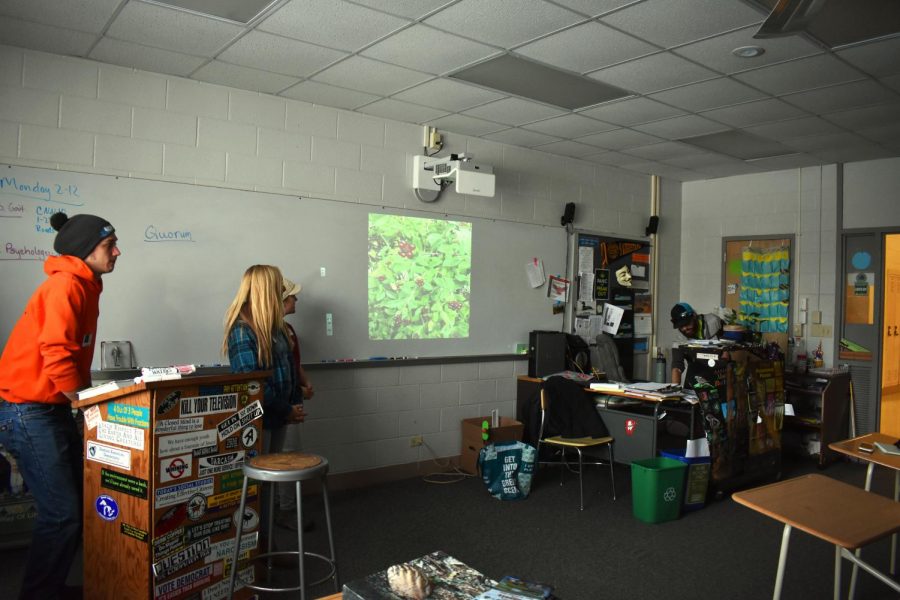Climate change creates warmer winter for Iowa
Living Lands and Waters speaking to the Ecology club on Monday, February 12th in room 207.
February 21, 2018
Walking outside of the house without having to put on a winter coat is not considered normal in the middle of January for Iowans. This winter, the highest temperature was 57 degrees Fahrenheit and this shows that winter has been abnormally warm this year.
In 100 years, the way the weather shifts around the world will be completely out of the ordinary compared to how it is now reported NASA. Some people may even noticed this recently, especially with the warmer winter at the start of 2018.
As for Iowa, the Iowa Almanac stated that, “The coolest periods will be from late November into early December, from late December into early January and in early February.”
It is also colder than Mars in some regions around the world. Mars’ average temperature around this time of year is -80 degrees Fahrenheit, while in Siberia on Jan. 16 it got to -88 degrees Fahrenheit.
“Back on December 20th the Mars Rover Curiosity registered a high of -9°. We’ve seen it colder here at times! However, when they reach their winter, temperatures will plunge to -70° or greater. In the height of summer it can get to almost 70°. So it is not uncommon to have a day or two when it’s colder than Mars,” KWQC’s Meteorologist Kevin Phelps said.
Although Iowa is not facing temperatures this severe, the coldest day to record this winter was on New Year’s with -19 degrees Fahrenheit, according to AccuWeather.
Some may wonder why the temperatures are so extreme this winter. Pew Research Center reports that climate change is one of the biggest leading threats globally.
“[Climate change is important because …] our whole system is aligned among us. We have adjusted our life to this climate and the fact that it’s going to become hostile and unpredictable is going to be a big problem,” ecology club adviser Jodi Zimmerman said.
This winter Minnesota is warming faster than almost any other area in the United States, according to CBS News. The dramatic winter warming in the northern states allows a general rule of climate change that cold areas and seasons warm faster. This leads scientists to believe that climate change may be a growing issue.
“Should we be environmentally intelligent and take care of this precious, limited resource of a planet? Yes. But, at the same time, I’m a science person and I can’t just go with data that doesn’t have the strength to actually go in the direction that they’re taking it. We have climate change, but we don’t have global warming. At least we don’t have statistical evidence that is strong enough to take us in the direction of global warming,” physics teacher Clint Van Fossen said.
New Years Eve saw record cold temperatures for much of the upper midwest. Although much of North America experienced below-average temperatures near the end of December, most of the world is warmer than usual right now.
These extreme weather changes safely assume that climate change is an ever growing issue each and every year.
“[At Living Lands and Waters] we educate people about the importance of waste reduction especially plastics and the negative impact the plastic pollution is having on our river and oceans ecosystems. Waste reduction is also important when it comes to reducing methane gas, an often overlooked component of climate change,” educational facilitator of Living Lands and Waters Michael Coyne-Logan said.
A big contributing factor to climate change is methane gas emissions in landfills. In fact, according to the Environmental Defense Fund, “about 25 percent of the man made global warming we are experiencing today is caused by methane emissions.”
Since weather is so ever changing, there is no way to know what the winter of 2019 will hold, but people will always have predictions and expectations.
“It will be much the same; it may be little warmer and it may be a little colder. Who knows. The weather is the weather and if you don’t like it, hang around and it’ll change eventually,” Van Fossen said.








